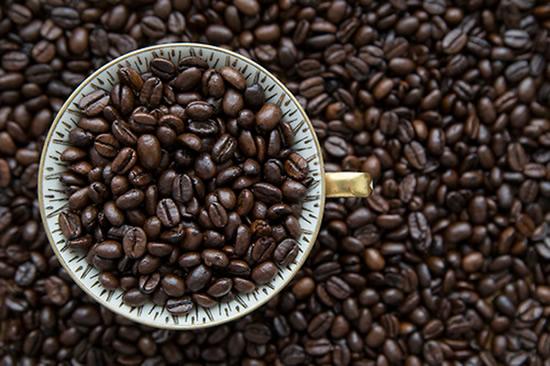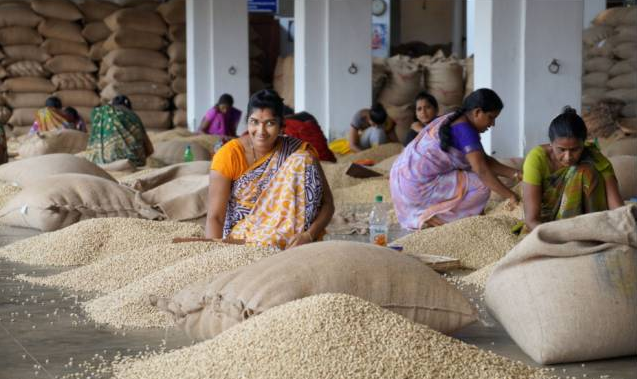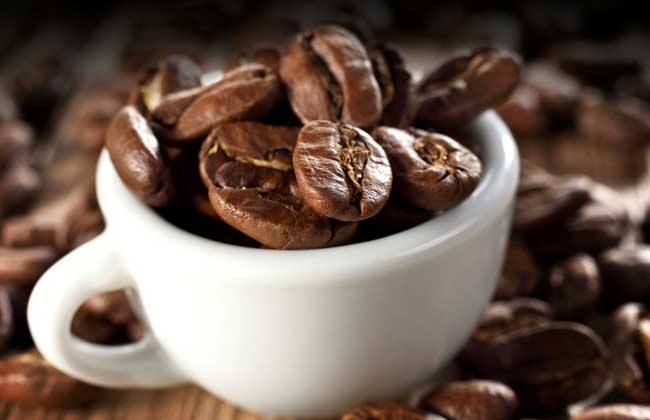Introduction to the wet planing method of Indonesian coffee beans
Follow the caf é (Wechat official account vdailycom) and found that Beautiful Cafe opened a small shop of its own.
When it comes to "Indonesia", you will immediately think of Mantenin, the "tough guy" of the coffee circle, which is characterized by low acidity, high mellow thickness, slightly herbal flavor and woody flavor.
Soil and water environment is an important reason that affects it, but what is more important is Indonesia's unique traditional coffee treatment method: wet planing.

Wet planing method
Indonesian Giling Basah,Giling translates as "smooth, worn off", and Basah translates as "wet", which translates as "wet body planing shell treatment", which is what we call "wet planing".
For sun and water washing in other areas, the dehydration process of coffee takes about two weeks, and only the peel and pectin are removed; but the humidity in Indonesia is more than 50% all year round. In some areas, there are often typhoons and annual rainfall of more than 2000 mm.
Coffee farmers adapt measures to local conditions and create a unique wet planing method in a humid climate: removing parchment and silver in advance, shortening the drying process to 3-4 days, speeding up the drying process and effectively reducing the impact of climate on coffee.
Step 1: filter
As with other treatments, the first step is to screen the picked coffee cherries into the pool, the ripe fruit will precipitate to the bottom of the pool, while the unripe fruit will float on the surface, and coffee farmers need to screen out the immature fruit first.
Step 2: peel
Ripe red fruit is now peeled in a peeling machine, while the wet planing method uses a smaller peeling machine to put shelled beans into large buckets or sinks filled with water to remove defective shelled beans floating on the liquid surface.
Step 3: dry body fermentation
Take out the dense shell beans that have sunk to the bottom of the water and put them in a bucket or plastic bag overnight for dry body fermentation. the longer the fermentation time is, the stronger the sour taste is, and the time is usually several hours, which varies from person to person. this also helps to decompose the pectin components in the gelatinous pulp, making it easier to remove the pulp in the following washing steps.
Step 4: wet planing and tanning
When the beans are exposed to the sun for one or two days, the moisture content of the bean body is up to 30% 50%, and the bean body is still semi-hard and semi-soft. Wipe off the seed shell with a shell planer and then dry it, which is what we call a "wet plane". Then the drying was carried out for about two days, and the moisture content reached 12% Mel 13%.
Flavor characteristics
Because in the process of treatment, the parchment and silver skin are removed, and the beans are exposed to the outside world, and the bean color of the wet planing method is turquoise.
The faster fermentation process also makes the wet-planed coffee with lower acidity and higher alcohol thickness. this kind of coffee also has a faint earthy aroma, and some people describe it as the aroma of herbs.
Important Notice :
前街咖啡 FrontStreet Coffee has moved to new addredd:
FrontStreet Coffee Address: 315,Donghua East Road,GuangZhou
Tel:020 38364473
- Prev

Indian coffee bean season wind soaking method
The monsoon coffee we are talking about today comes from India, a magical country, and even the coffee is a bit legendary. Legend has it that a pilgrim named Baba Budan smuggled seven coffee beans through Yemen on his way back from Mecca. In order to avoid Arab inspection, he wrapped seven coffee seeds in cloth, hid them in the cracks in his ribs, and brought them to his own India.
- Next

What is a cup test? The history of the cup test and etiquette introduction
Pay close attention to the coffee review (Weixin Official Accounts vdailycom ) and find that the behavior of opening a small shop cup test in a beautiful coffee shop is a very inclusive activity. The input and output of coffee products are centered on non-professionals. The more people participate, the stronger the authenticity and the higher the acceptance of the products by customers. The following small series introduces you to all kinds of coffee cup tests
Related
- What is the meaning of lactic acid fermentation with coffee bean treatment?
- How to judge the state of foam by sound?
- How does the latte pull out the unicorn pattern? Come to get for a little trick to improve the flower pull!
- Will flower pulling affect the taste of the latte?
- Do you know the history of coffee?
- The difference between honey treatment and sun washing what is raisin honey treatment?
- What kind of milk can a novice use to make coffee foam to keep the foam longer? The correct method and skills of milking tutorial sharing
- Why do washed coffee beans taste sour? Flavor characteristics of washed Coffee
- Introduction to the skill of how to practice the size and height of water injection around the circle of hand-brewed coffee
- How do beginners practice coffee flower drawing from scratch?

